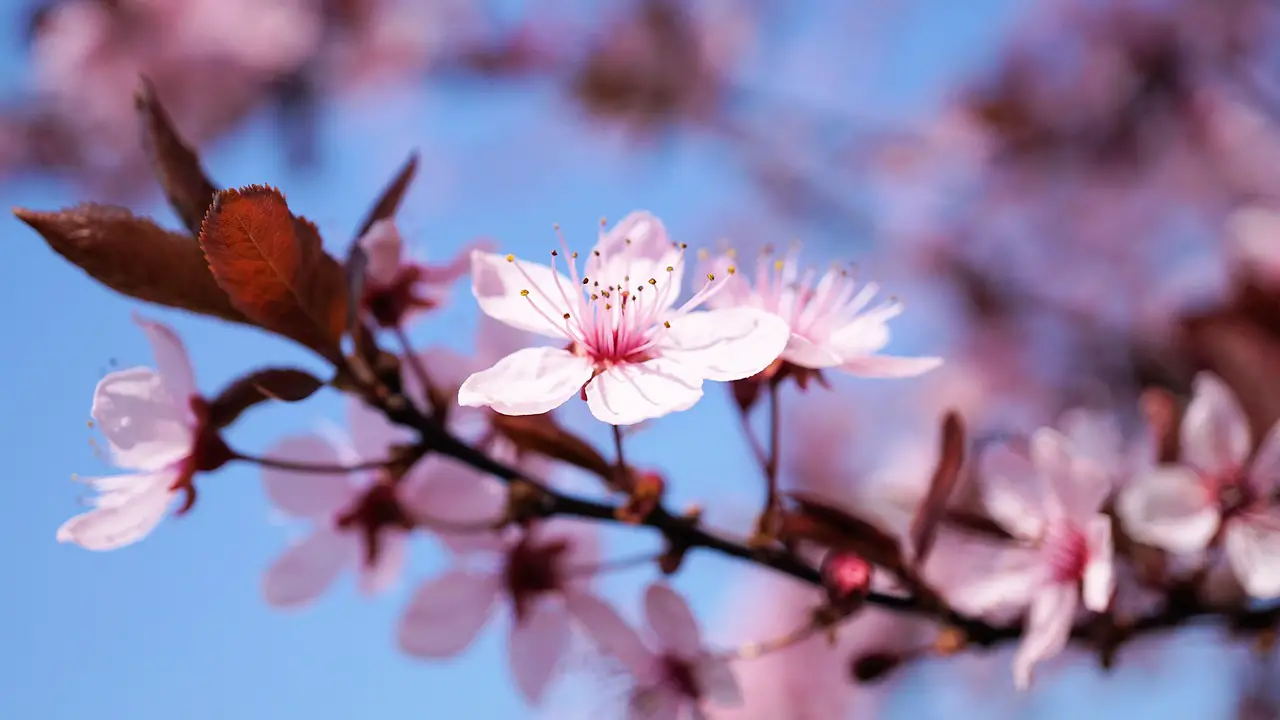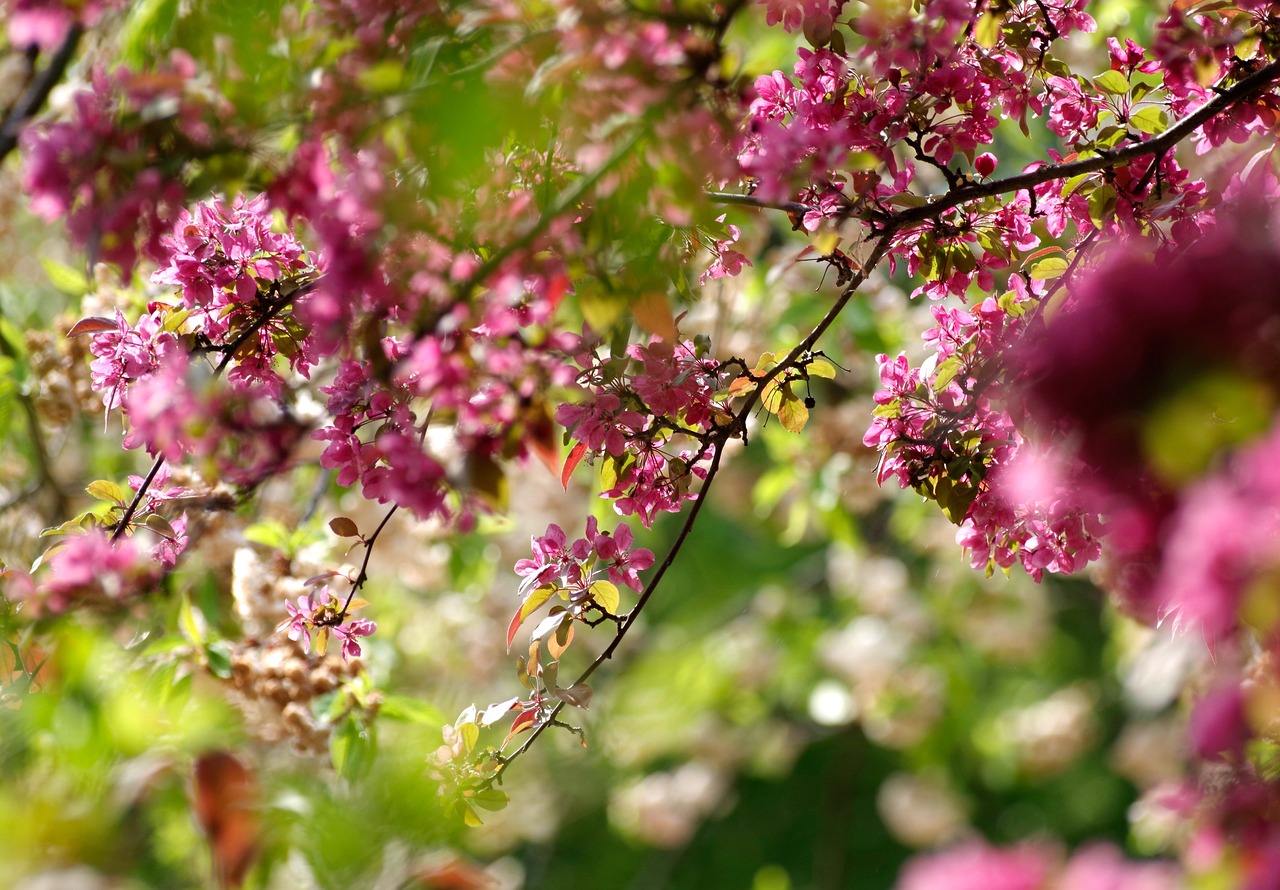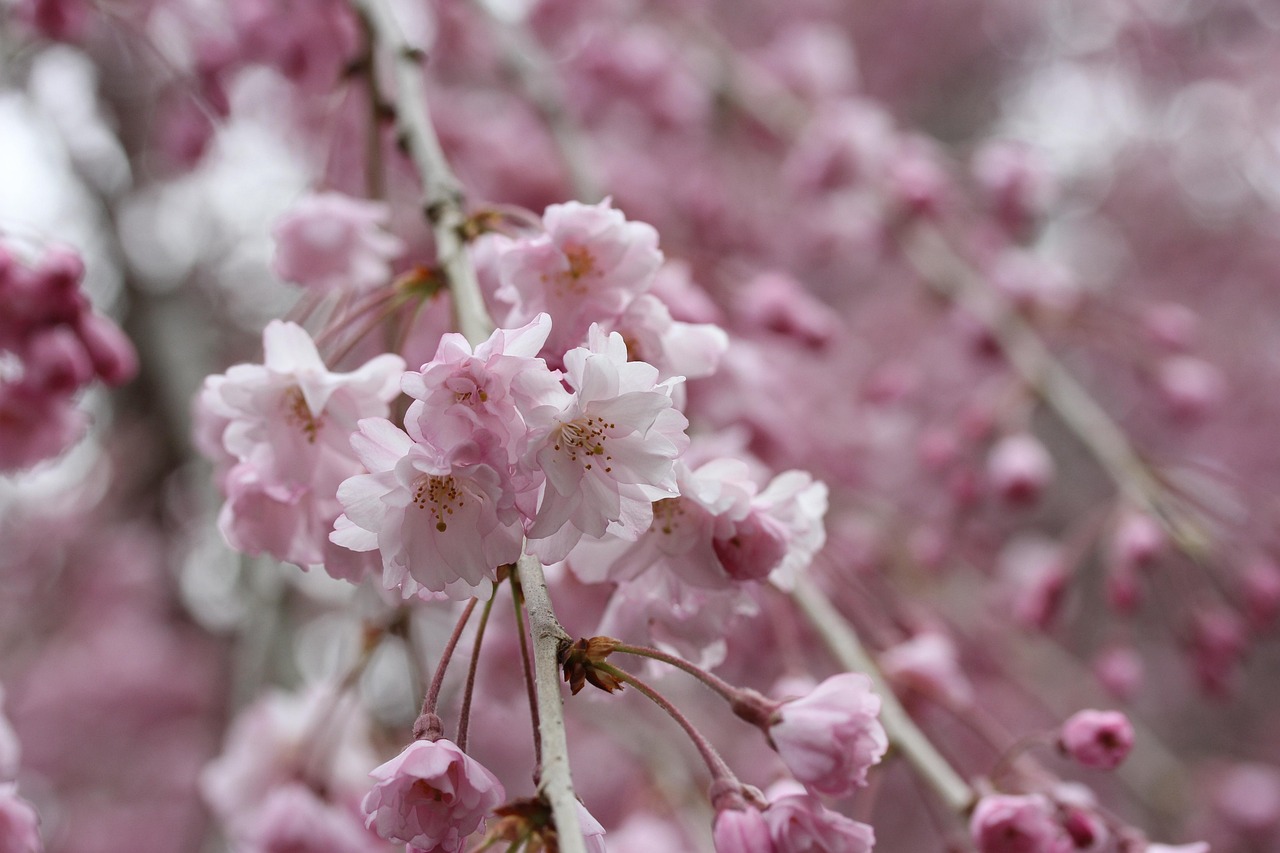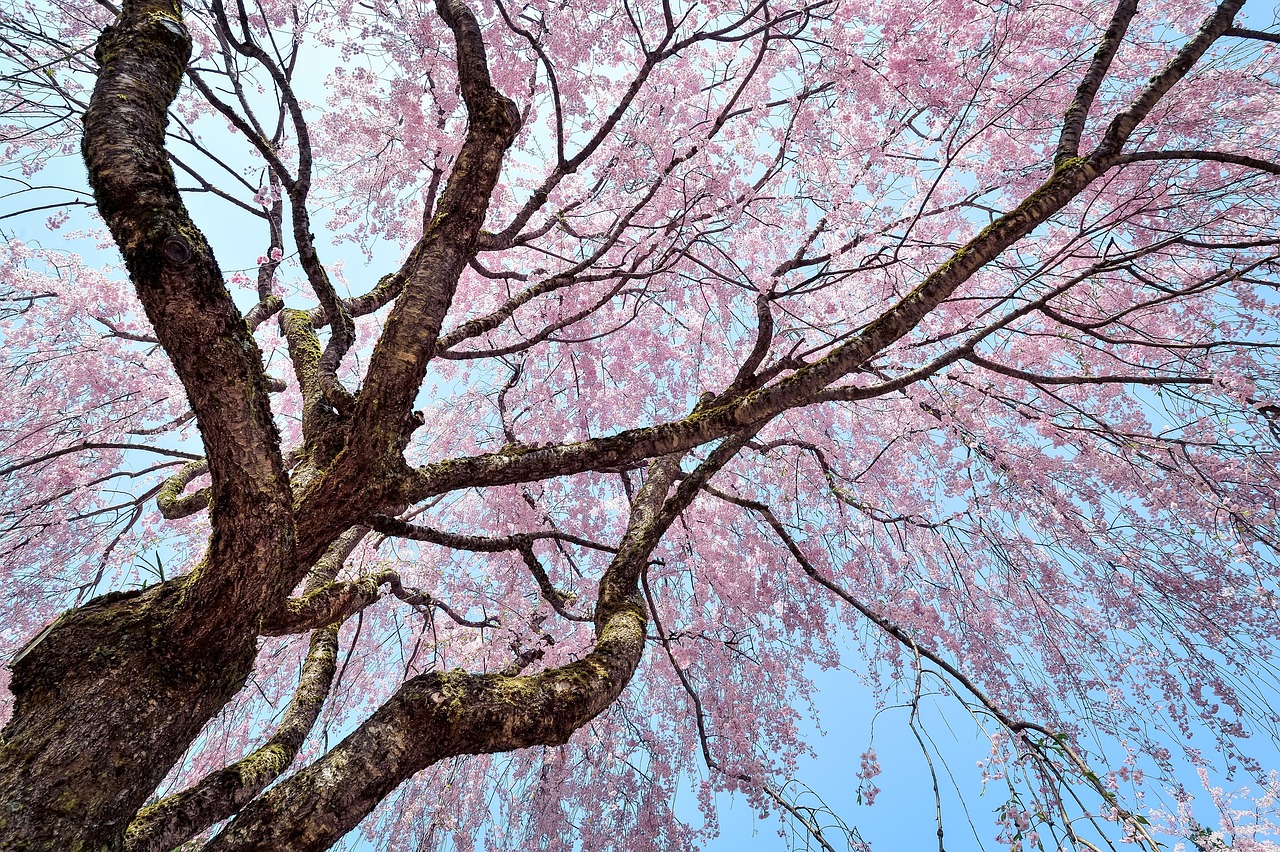Pruning a weeping cherry tree is essential for maintaining its health and beauty. Proper techniques enhance its graceful form and promote vibrant blooms. Regular pruning also helps prevent disease and encourages strong growth.
The weeping cherry tree, known for its stunning cascading branches and delicate pink or white blossoms, is a favorite among gardeners. This ornamental tree not only adds elegance to any landscape but also attracts pollinators during its blooming season. However, to keep it looking its best, regular pruning is necessary. Understanding when and how to prune is crucial for the tree’s overall health and aesthetic appeal.

Pruning weeping cherry trees requires a bit of knowledge and skill. The best time to prune these trees is during late winter or early spring, just before new growth begins. This timing minimizes stress on the tree and allows it to recover quickly. Pruning at this time also helps to shape the tree before it puts out its beautiful flowers.
Benefits of Pruning Weeping Cherry Trees
Pruning offers numerous benefits that contribute to the health and beauty of weeping cherry trees. Below are some key advantages:
- Improved Air Circulation: Pruning helps open up the canopy, allowing better airflow which reduces the risk of fungal diseases.
- Enhanced Flowering: By removing old and dead wood, you encourage new growth, leading to more abundant blooms.
- Shape Maintenance: Regular pruning helps maintain the tree’s unique weeping form, ensuring it remains attractive throughout the seasons.
- Healthier Growth: Removing diseased or damaged branches promotes healthier overall growth.
In addition to these benefits, pruning can also help control the size of the tree, making it suitable for various garden spaces. By managing its height and spread, gardeners can prevent overcrowding and ensure that other plants in the vicinity receive adequate sunlight and nutrients.

Essential Tools for Pruning
Having the right tools is crucial for effective pruning. Here are some essential tools you should consider:
- Bypass Pruners: For small branches, bypass pruners are ideal as they make clean cuts.
- Loppers: These are used for cutting larger branches that are too thick for pruners.
- Saw: A hand saw or pole saw is useful for cutting very thick branches.
- Gloves: Protect your hands from thorns and rough bark with a good pair of gardening gloves.
Before starting the pruning process, ensure that your tools are clean and sharp. This helps prevent injury to the tree and reduces the risk of transmitting diseases between plants.
Pruning Techniques
Understanding proper pruning techniques is crucial to achieving the desired results. Here are some techniques to keep in mind:

1. Remove Dead or Diseased Wood
Start by inspecting the tree for any dead, damaged, or diseased branches. Cut these off at the branch collar, which is the swollen area where the branch meets the trunk or another branch. This prevents further decay from spreading.
2. Thin Out Crowded Areas
If you notice areas where branches are densely packed, thin them out. This improves light penetration and air circulation within the canopy. Aim to remove branches that cross each other or grow inward toward the center of the tree.
3. Shape the Tree
To maintain the tree’s natural shape, selectively prune branches that disrupt its elegant form. Focus on keeping the weeping habit intact while also encouraging a balanced appearance.

4. Cut Back New Growth
In late winter or early spring, you can cut back about one-third of new growth from the previous season. This promotes bushier growth and more flowers in the coming year.
When Not to Prune
While pruning is beneficial, there are certain times when you should avoid it:
- Avoid Pruning in Late Summer: Late summer pruning can stress the tree as it prepares for dormancy.
- Do Not Prune During Blooming Season: Wait until after flowering to avoid cutting off buds that will bloom.
- Avoid Pruning in Winter: Harsh winter conditions can damage freshly cut areas before they heal.
By understanding these guidelines, you can ensure that your weeping cherry tree remains healthy, vibrant, and stunning throughout the years. Proper pruning not only enhances its beauty but also strengthens its resilience against pests and diseases.
Common Pruning Mistakes to Avoid
Even experienced gardeners can make mistakes when pruning weeping cherry trees. Recognizing these common errors can help ensure the health and beauty of your tree. Below are some pitfalls to avoid:
- Over-Pruning: Removing too much foliage can shock the tree, leading to stunted growth or even death. Always aim to prune no more than 25% of the tree’s total canopy in a single season.
- Improper Cuts: Making flush cuts that remove the branch collar can harm the tree. Always cut at an angle and leave the branch collar intact to promote healing.
- Ignoring Tree Health: Failing to assess the overall health of the tree before pruning can lead to further issues. Always check for signs of disease or pests before making cuts.
- Neglecting Safety: Not using proper safety equipment can result in accidents. Always wear gloves, goggles, and sturdy shoes while pruning.
Seasonal Care After Pruning
Post-pruning care is critical for the recovery and growth of your weeping cherry tree. Following appropriate seasonal practices can enhance the benefits of your pruning efforts.
Spring Care
After pruning in late winter or early spring, focus on these care tips:
- Watering: Ensure the tree receives adequate water during its growing season. Newly pruned trees may need additional watering to help them recover.
- Fertilizing: Apply a balanced fertilizer to support new growth. Look for fertilizers specifically designed for flowering trees.
- Pest Control: Monitor for signs of pests or diseases that could affect new growth. Early detection allows for prompt action.
Summer Care
During the summer months, keep an eye on your tree’s health and growth:
- Mulching: Apply a layer of mulch around the base of the tree. This helps retain moisture and suppress weeds.
- Regular Watering: As temperatures rise, ensure consistent watering, especially during dry spells.
- Observation: Watch for any signs of stress or damage from heat or pests.
Types of Weeping Cherry Trees
There are several varieties of weeping cherry trees, each with unique characteristics. Understanding these differences can help you choose the right tree for your garden and apply suitable pruning methods.
| Variety | Description | Bloom Time |
|---|---|---|
| Prunus subhirtella ‘Pendula’ | This variety features long, drooping branches and small, pink flowers. | Early Spring |
| Prunus serrulata ‘Kanzan’ | A popular choice known for its double pink flowers and robust form. | Mid Spring |
| Prunus pendula ‘Rosea’ | This weeping variety has pale pink blossoms and a delicate appearance. | Early Spring |
Each variety may have slightly different pruning needs based on its growth habits and bloom characteristics. Knowing which type you have can guide your pruning strategy effectively.
The Role of Environmental Factors in Pruning
The environment plays a significant role in how you should approach pruning your weeping cherry tree. Factors such as climate, soil type, and local wildlife can all influence your decisions.
Climate Considerations
Your local climate can dictate when and how aggressively you prune your tree:
- Warm Climates: In warmer regions, trees may bloom earlier, so adjust your pruning schedule accordingly.
- Cold Climates: In areas with harsh winters, wait until the threat of frost has passed before pruning.
Soil Quality
The quality of the soil affects the overall health of your weeping cherry tree. Nutrient-rich soil promotes vibrant growth:
- Poor Soil: If the soil is lacking nutrients, consider amending it with organic matter before pruning to encourage recovery.
- Pest Management: Soil quality can attract pests; monitor soil health regularly to prevent infestations.
Caring for Newly Planted Weeping Cherry Trees
If you have recently planted a weeping cherry tree, special care is necessary to ensure its health and future growth. Pruning practices will differ slightly compared to established trees.
- Avoid Initial Pruning: For newly planted trees, avoid heavy pruning in the first year. Allow them to establish before making significant cuts.
- Mild Shaping: Light trimming may be appropriate to remove broken or crossing branches, but ensure not to disturb developing growth too much.
- Focus on Establishment: Prioritize watering and nutrient supply during the first growing season over extensive pruning activities.
This careful approach provides a solid foundation for healthy development in subsequent years, setting the stage for beautiful blooms and a graceful form as the tree matures.
Understanding Weeping Cherry Tree Growth Habits
To effectively prune a weeping cherry tree, it is essential to understand its growth habits. These trees tend to grow in a distinctive manner that influences how you should approach pruning. Knowing their characteristics can help you maximize their beauty and health.
Growth Patterns
Weeping cherry trees exhibit a unique growth pattern characterized by long, drooping branches that create a cascading effect. This form is what makes them so visually appealing. Here are some key aspects of their growth:
- Branch Structure: Weeping branches grow downward, often creating a layered look. This structure requires careful management to prevent overcrowding.
- Height and Spread: Depending on the variety, these trees can reach heights of 15 to 30 feet. It is crucial to consider both height and spread when planning your pruning strategy.
- Seasonal Changes: The tree’s appearance changes significantly with the seasons, from lush green foliage in summer to vibrant blossoms in spring and bare branches in winter.
Understanding Flowering Cycles
The flowering cycle of weeping cherry trees is notable and impacts when and how they should be pruned. Most varieties bloom in early spring, often before the leaves fully develop.
- Timing of Blooms: Knowing when your specific variety blooms is crucial. This knowledge helps decide when to prune without sacrificing future blossoms.
- Post-Bloom Pruning: After blooming, you can evaluate the tree’s structure and remove any spent flowers or branches that detract from its beauty.
Pest and Disease Management
Like any tree, weeping cherry trees can be susceptible to various pests and diseases. Regular monitoring and proper pruning techniques can mitigate these issues and keep your tree healthy.
Common Pests
Here are some common pests that may affect weeping cherry trees:
- Aphids: These small insects can cluster on leaves and stems, sucking sap and potentially causing leaf curling.
- Spider Mites: Often found on the undersides of leaves, spider mites thrive in hot, dry conditions and can cause leaf discoloration.
- Cherry Fruit Flies: These pests lay eggs in fruit, leading to premature dropping and damage.
Disease Issues
Pests can lead to diseases that may affect the health of your tree. Some common diseases include:
- Canker Diseases: These can cause dieback of branches, often appearing as sunken areas on the bark.
- Powdery Mildew: A fungal disease that results in a white powdery coating on leaves, impacting photosynthesis.
- Root Rot: Caused by overwatering or poor drainage, root rot can lead to tree decline if not addressed quickly.
Best Practices for Pest and Disease Control
Implementing effective pest and disease management strategies is vital for maintaining the health of your weeping cherry tree. Consider the following practices:
- Regular Inspections: Frequently check your tree for signs of pests or disease. Early detection is key to effective management.
- Organic Treatments: Use organic pesticides or insecticidal soaps to manage pest populations without harming beneficial insects.
- Proper Pruning: As discussed earlier, correct pruning techniques improve airflow and reduce humidity around the foliage, making it less hospitable for diseases.
The Role of Soil Health
The soil quality in which your weeping cherry tree is planted plays a significant role in its overall health. Healthy soil promotes strong root systems and robust growth.
Soil Composition
Weeping cherry trees thrive best in well-draining soil that retains some moisture but does not become waterlogged. Here are some factors to consider:
- pH Levels: Weeping cherries prefer slightly acidic to neutral soil (pH 6.0 to 7.0). Conduct a soil test to determine pH levels and adjust accordingly.
- Nutrient Content: Ensure the soil is rich in organic matter. Adding compost or well-rotted manure can improve nutrient availability.
- Diversity in Soil Microorganisms: A healthy microbial community within the soil supports plant health. Consider adding mycorrhizal fungi to enhance root development.
Irrigation Practices
Irrigation is critical for ensuring your weeping cherry tree receives adequate moisture. The following tips can help you establish effective watering practices:
- Deep Watering: Water deeply but infrequently to encourage deep root growth. This helps the tree withstand drought conditions better.
- Avoid Waterlogging: Ensure proper drainage around the tree’s base to prevent root rot caused by excess water.
- Mulching Techniques: Apply mulch around the base of the tree to retain moisture while preventing weed competition.
Seasonal Pruning Schedule
An annual pruning schedule helps ensure that your weeping cherry tree remains healthy and beautiful throughout its life. Here is a suggested timeline for seasonal care:
| Season | Main Tasks |
|---|---|
| Winter | Inspect for damage; plan for spring pruning; ensure tools are ready. |
| Early Spring | Prune before new growth; remove dead or diseased branches. |
| Summer | Monitor for pests; ensure watering; light shaping if necessary. |
| Fall | Avoid heavy pruning; prepare for winter; add mulch if needed. |
This seasonal schedule serves as a guide to help maintain your weeping cherry tree’s health while enhancing its stunning visual appeal throughout the year.
Enhancing Your Weeping Cherry Tree’s Aesthetic Appeal
Beyond pruning, there are several additional practices you can implement to enhance the aesthetic appeal of your weeping cherry tree in the garden. These practices help to create a stunning backdrop and complement the tree’s natural beauty.
Companion Planting
Choosing the right plants to accompany your weeping cherry tree can enhance its visual impact. Consider the following tips for companion planting:
- Low-Growing Plants: Planting low-growing flowers or ground covers around the base of the tree can highlight its height and cascading branches. Options include creeping phlox or ajuga.
- Color Contrast: Select companion plants that offer contrasting colors. For example, white or yellow flowers can contrast beautifully with the pink blossoms of a weeping cherry.
- Seasonal Interest: Choose plants that bloom at different times throughout the year to maintain visual interest in your garden.
Lighting Features
Incorporating lighting features around your weeping cherry tree can create a magical atmosphere, especially in the evening. Here are some ideas:
- Spotlights: Use spotlights directed at the tree to highlight its shape and beauty during nighttime.
- String Lights: Consider wrapping string lights around the branches for a festive and enchanting look.
Garden Design Considerations
The placement of your weeping cherry tree in your garden is crucial. Here are some design considerations:
- Focal Point: Position the tree as a focal point in your garden design, surrounded by complementary plants and features.
- Pathways: Create pathways that lead to and around the tree, encouraging visitors to appreciate its beauty from different angles.
Common Questions About Weeping Cherry Tree Pruning
As gardeners embark on their journey with weeping cherry trees, they often have questions regarding care and maintenance. Here are some frequently asked questions along with concise answers:
- How often should I prune my weeping cherry tree? Generally, you should prune your tree once a year, ideally in early spring before new growth begins.
- Can I prune my tree too much? Yes, over-pruning can stress the tree and lead to unhealthy growth. Limit pruning to 25% of the canopy at a time.
- What do I do if my tree has a disease? Identify the disease and consult with a local horticulturist or arborist to determine the best course of action, which may include pruning affected areas.
Final Thoughts
Caring for a weeping cherry tree involves more than just pruning; it requires a holistic approach that includes understanding its unique growth habits, managing pests and diseases, and enhancing its overall environment. By following the guidelines outlined in this article, you will be well-equipped to maintain a beautiful and healthy weeping cherry tree in your garden.
The beauty of weeping cherry trees lies not only in their stunning blossoms but also in their graceful form. Proper pruning techniques, seasonal care, and thoughtful companion planting will ensure that your tree remains a focal point in your landscape for many years to come. With attention and care, your weeping cherry tree will provide joy and visual delight each spring when it bursts into bloom, making it a cherished part of your garden.
Remember that gardening is a journey. Each season brings new challenges and rewards. Embrace these challenges as opportunities to learn more about your plants and enjoy the beauty they bring to your outdoor spaces.
